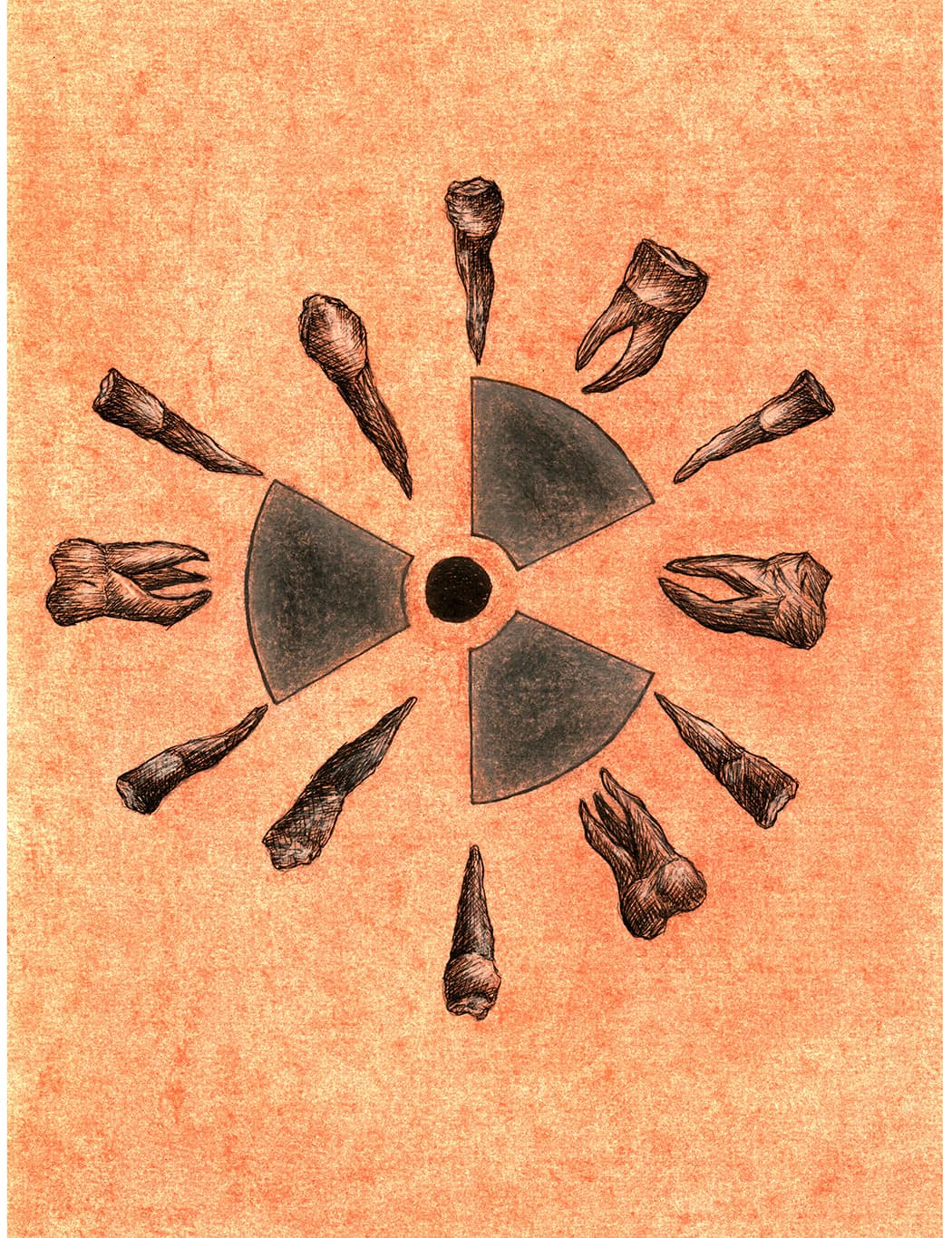Experiments Explained is The Varsity’s Science subsection featuring notable findings in history. Our goal is to showcase the scientific method and promote an appreciation for the experiments that shaped our understanding of science today.
Humanity has been fundamentally transformed by the discovery of nuclear radiation and radioactive chemical elements. Marie and Pierre Curie discovered radium in the late 1890s, following Henri Becquerel’s discovery of radioactivity. Since then, World War I has led to the advent of the first X-ray machine, which treated injured soldiers, and World War II has brought upon the development of weapons of mass destruction.
Not long after, scientists began collecting radioactive baby teeth on American land: the unexpected aftermath of harnessing the unprecedented power of nuclear radiation.
One of those scientists was Ursula Franklin, the first female to receive the University Professor distinction at U of T in 1984. Franklin was an academic, an educator, a prolific writer, a highly vocal and active pacifist and feminist, but also held the lesser known titles of metallurgist, archaeometrist, practicing Quaker, and Holocaust survivor.
It is perhaps the result of her impactful social activism and visionary writings on war, globalism, social justice, and technology that some attention has been drawn away from Franklin’s scientific achievements.
One such accomplishment was a high-profile study that started in 1958. In collaboration with a number of scientists, Franklin investigated the impact of ground nuclear weapon testing, which had begun in the early 1940s in prelude to the attack on Japan at the end of World War II. Radioactive elements, one of which was strontium-90, had been released for the first time into the environment due to this nuclear weapon testing. Strontium-90 chemically resembles the important nutritional element calcium, leading to its incorporation along with calcium into the bones and teeth of developing unborn babies, which continues even after their birth.
Over the course of the 12-year study, the team collected more than 300,000 shed baby teeth, mostly from children in St. Louis, Missouri. The researchers incinerated and pulverized the teeth before extracting and analyzing its composite minerals.
The analysis revealed a spike in strontium-90 levels in children born between 1954 and 1955. This coincided with a period of extensive nuclear testing that started in 1953. Among these children, strontium-90 levels were also found to be higher in those who were bottle-fed compared to those who were breastfed.
This observation further emphasized that the children were absorbing the radioactive element from the environment — picture acres of dairy farms showered with rain that has just passed through kilometers of atmosphere containing radioactive dust.
In June 1963, shortly after publishing the first phase of the study, Dr. Eric Reiss, one of the main participating scientists, presented the findings in testimony before the American Senate committee. Two months later, the Partial Test Ban Treaty (PTBT) between the United States, the Soviet Union, and Britain was signed. This agreement prevented countries from performing test detonations of nuclear weapons, except for those conducted underground.
During a second phase of the study, a 50 per cent decline in strontium-90 was seen in children born in 1968, thanks in part to the PTBT that Franklin and her team helped bring about.


